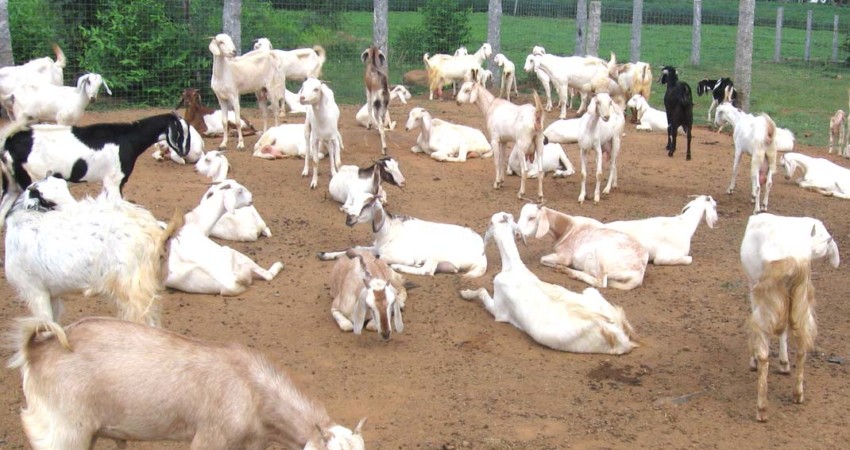

A meat goat enterprise creates cash income from the sale of extra kids and culled adults. When starting, a good understanding of goats and the goat market will enable you to adapt a suitable production plan that includes appropriate breeds, numbers and farm size. Select carefully Never build your stock with animals from a sale yard that have been culled by other farmers. There is always a reason, to escape the problem as to why they were culled, because you do not want to transfer those problems to your stock
Some of the signs to look out for in healthy animals include: shiny coat, lively manner, easy movement (no limping, no swollen joints or misshapen udders), no abscesses, proper conditioning (not too fat or excessively thin), firm and pelleted dung, and well shaped udder and teats.By combining goats with cattle in the pastures, a farmer can get a slice of this growing market.
Feeding: Feed costs account for up to 70 per cent of the total cost in a meat goat enterprise. To reduce costs, adequate year round browsing and/or grazing with only mineral supplementation is the most economical way.
During the dry season, inadequate feed is the most limiting factor. According to Kabanyoro farm, farmers can supplement by using silage and hay, crop by-products such as maize stalks, forages from leucaena, calliandra, gliricidia, clitoria and centrosema, harvested cassava leaves left under the sun for 1 day to reduce poisoning, pruned mango tree branches, cow peas, local bran from pound maize and other grains as energy supplement.Water On the minimum, an adult goat should take 2 litres of water per day. It is advisable that clean water is made available to the animals such that they take as much water as they like. Dirty water carries disease-causing agents.
Parasites Worms: Worms interfere with normal growth of goats. Some of the signs indicating worm infestation include: Diarrhoea, weakness, swollen neck, loss of appetite, sunken eyes and finally death. Deworm goats at the beginning and at the end of rains, when worm build up on the ground is high. You can deworm after every 2-3 months.
Ticks: To control ticks, wash your goats every two weeks with water containing acaricide using a piece of cloth or a hand sprayer. Wear hand gloves for protection against the acaricide. Use at least 1.5 litres of the mixed acaricide for each adult goat.
Breeding There are four main characteristics, which make a goat both suitable and profitable for production: adaptability to environment, reproductive rate, growth rate, and carcass value. When selecting foundation goats, pick animals that would mostly satisfy these criteria.
Cross breeding – mating individuals of different breeds – is recommended. It results in hybrid vigor; the superiority of the crossbred offspring to the average of both of its parents. Using crossbred females and producing crossbred kids can maximize the hybrid vigour.
Inbreeding causes small goat size, deformed kids and stillbirths. Inbreeding is mating closely related goats, for example father to daughter or granddaughter, or brother to sister. Keep not more than 2 breeding bucks in your flock for every 50 ewes and exchange them every year with unrelated bucks. Use bucks that are at least 1 year old. Castrate or separate bucks not intended for breeding. A serious farmer will have a keen eye on animals in the flock with the highest twinning rates. Meat goats are good companions with cattle in the pastures Goats can easily graze with cattle or sheep if they are in conditions where they can browse within a fenced area. Goats are browsers, and so they will eat shrubs and tall weeds, cattle eat tall grass, while sheep eat shorter grasses.
Goats tend to prefer hilly grounds, while cattle prefer to stay in the flatlands. It wouldn’t harm to see cattle and goats grazing together because it makes good economic sense. Grazing a combination of these different livestock can help you to manage risk, and promote plant diversity on the grazing grounds. A good combination would be goats and cows, or goats and sheep.
Sheep and cows would not make a good combination because sheep eat on the lowest grasses (near the ground), and would most likely lead to overgrazing the pastures. The cows might also starve, especially during the dry season when the growth rate of pastures is much lower. Good fencing is important Goats have been known to be rowdy and destroy the environment by eating young trees.
 Contact Jaguza Support
Contact Jaguza Support